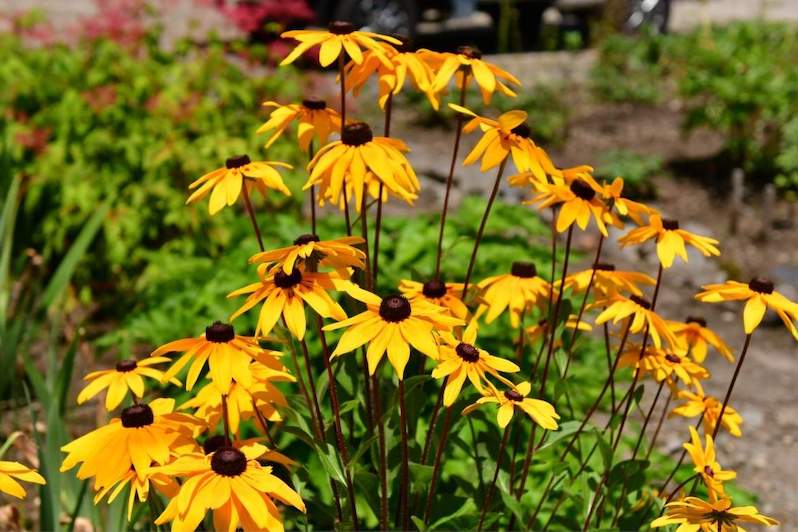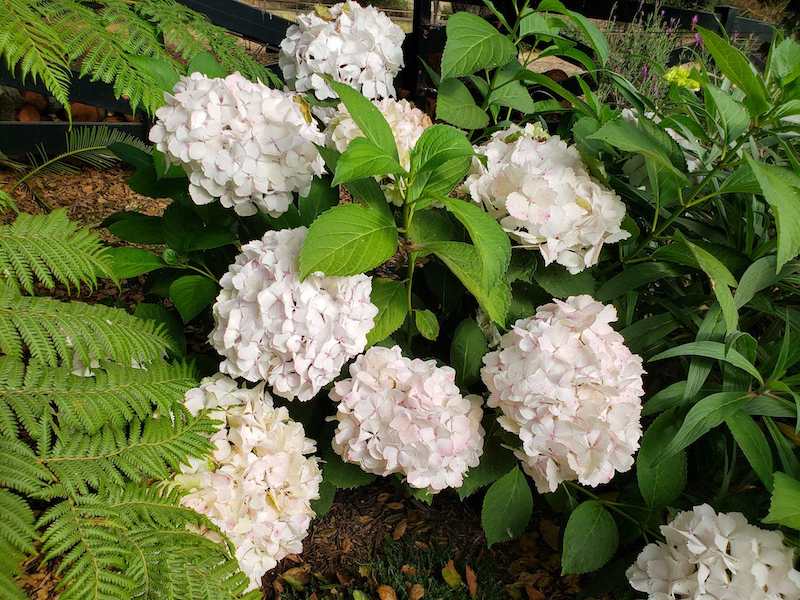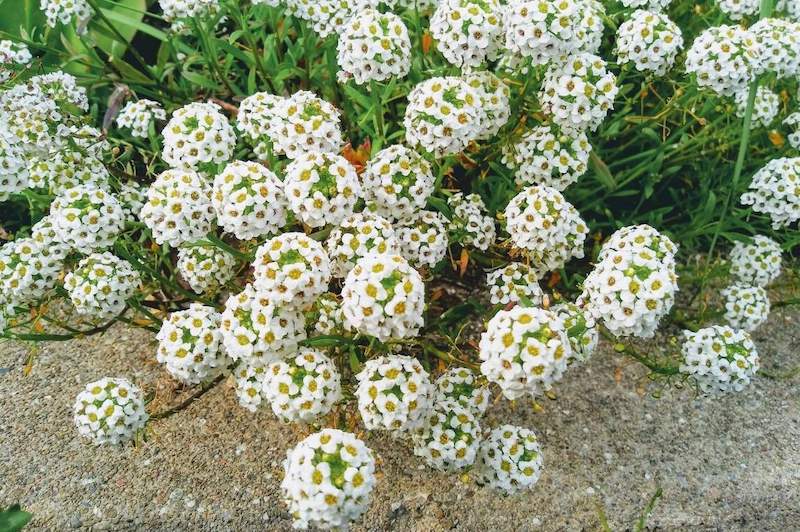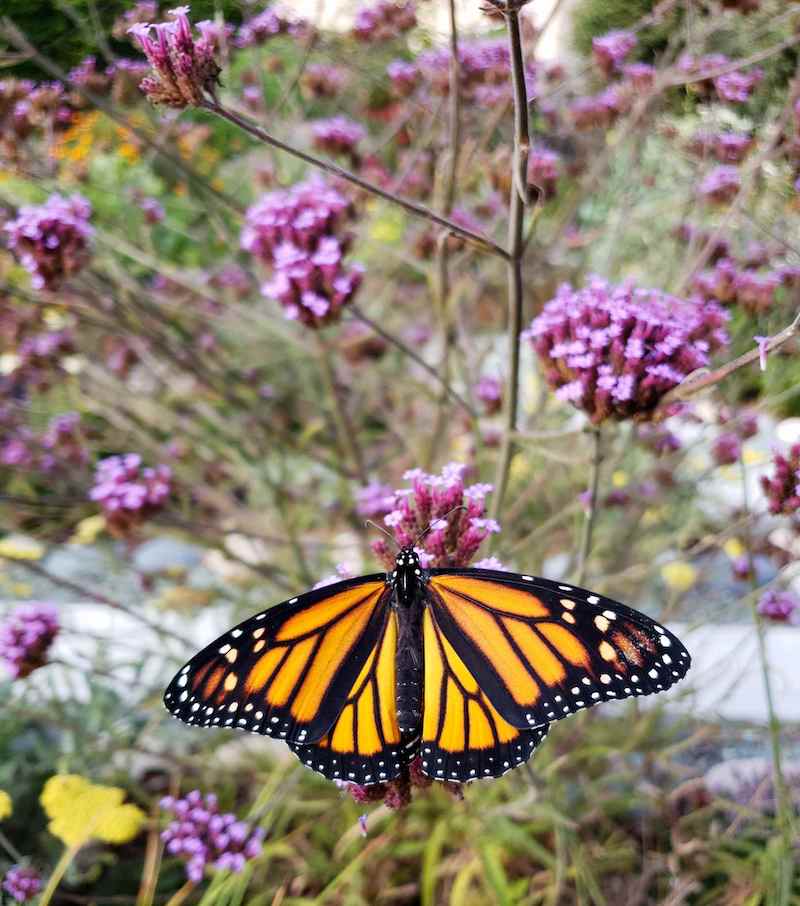
Best Fall Flowers: 18 Flowers that Bloom in Fall
We all know spring and flowers go hand-in-hand, but fall doesn’t need to be just about the changing leaves! Many flowers bloom through the fall, offering an extended pop of color as well as a continued food source for pollinators. Read along to learn about the top 18 flowers to grow in your fall garden.
The fall flowers on this list either a) blossom through autumn, b) can be planted in summer for fall blooms, and/or c) grow happily in cooler temperatures. Some are even frost-tolerant. Folks in mild and southern climates may be able to grow many of these fall flowers right through winter too!
So in no particular order, and without further ado… we hope this list inspires you to plant something new!
1) Mums
Ah, the quintessential fall flower. More formally known as Chrysanthemums, potted mums are readily found at nurseries, big box stores, and even grocery stores come autumn. They grow in a wide variety of colors, but are most often seen in sunset hues – perfect for fall decor. Their stout bushy nature means mums are very container-friendly, making them popular for porch displays. Mums are cold-hardy perennials, but may not survive the winter when planted late in fall. Plant in-ground mums in springtime to provide ample time to become established.

2) Pansies & Violas (Johnny Jump-Ups)
Violas are often called “Johnny Jump Ups” (that’s the name of the most common variety) and pansies are actually derived from violas, so I’m lumping these closely-related popular fall flowers here. Clemson University has a great article that outlines their more subtle differences if you’re curious!
Pansies and violas are both annuals that thrive in cooler conditions. They tolerate light frost and may even survive a hard frost, though some protection is suggested to help them through the latter. Plant pansies and violas in late summer to fall for petite blooms of purple, blue, white, yellow, orange or red that will last well through autumn and even through winter in mild climates. The colorful flowers resemble funny little faces. Thanks to Alice in Wonderland, that is all I can see when I cross a pansy!

3) Calendula
If you know me, you know calendula is my all-time favorite flower. While the plants can live on until a hard frost takes them out, calendula will bloom most robustly during the earlier portion of its life – slowing flower production as it gets old and woody. Therefore, if you’re hoping for fall flowers, start calendula seeds in late spring and/or plant seedlings in summer for the most prolific autumn blooms. Or like we do, succession plant many rounds of calendula throughout the year!
Learn all about calendula here – including growing tips, our favorite varieties, and how to harvest and dry calendula to make medicinal oil and nourishing body salve. Some of our favorite calendula varieties include Strawberry Blonde, Orange King, Resina, and Pacific Beauty.

4) Snapdragons
Snapdragons bloom on elegant tall flower spikes in a huge range of colors. They’re simple yet stunning in the garden as well as in cut flower bouquets. These cool-season flowers are technically a perennial (albeit short-lived) but most often grown as annuals. Snapdragons grow best when overnight temperatures are in the 40s and daytime temperatures in the 60s to low 70s, which makes them a great fall flower in many locations – and ideal for southern and temperate climate gardeners to grow right through winter and into spring. If they do die back from frost, heavy mulch around the root zone may enable them to re-grow once the soil warms in spring. Or, volunteer snapdragons may pop up as a result of self-seeding.
Consider these gorgeous Lion’s Mouth snapdragons!

5) Coneflower or Echinacea
Echinacea, also known as coneflower, is one of the most cold-hardy fall flowers on this list! While they do die back during the winter, varieties can be found that survive as perennials in USDA hardiness zones as low as 3 and 4. Purple echinacea is a classic, though coneflowers come in a wide variety of colors that will bloom in summer until frost. Bees and butterflies adore pollen-rich echinacea flowers, birds love the seeds, and resourceful gardeners can harvest the roots to make medicinal teas and tinctures once the plants are well-established (after a few years, ideally at the time of dividing clumps).

6) Marigold
Marigolds are one of our favorite low-fuss companion plants in the garden. They’re easy to grow from seed or seedlings, provide a long blooming season, are mildly frost-tolerant, and attract pollinators but very few pests. In fact, marigolds even deter certain pests and thereby offer protection to neighboring plants. (Read more about companion planting here). Most marigold blooms are orange, yellow, or red (hellooo fall colors!) and grow on plants ranging from 6 inches to several feet tall – depending on the variety. Deadhead spent blooms to promote even more!
We love Tangerine Gem and classic French marigolds.

7) Aster
Asters are another iconic fall flower. They bloom around the same time as mums (August to October), and much like marigolds, are very low-maintenance and prolific. Cheery daisy-like Aster flowers come in shades of blue, purple, lavender, white, yellow, and pink. Some Aster varieties are petite and are grown as low bedding cover, while others can reach several feet tall and wide. Tall erect varieties make excellent cut flowers as well. Experts recommend not pruning Asters during their active flowering season. Instead, wait until the plant has finished blooming and then heavily trim it back near the ground. It will go dormant over winter but survive as a perennial in zones 6 and warmer.

8) Dahlia
Oh, Dahlias. These fabulous flowers are currently blooming in our new garden and have completely stolen my heart. Dahlias begin to bloom in July but last well into September and October. They make excellent cut flowers, with gorgeous large blossoms atop erect stems that come in dozens of colors. Folks in temperate climates can leave their Dahlias in-ground year round. However, northern gardeners must dig up and save the tubers once the first frost kills the foliage (extended freezing conditions will also kill the bulb) and replant them come spring.

9) Zinnia
Zinnias are one of my favorites. They’re gorgeous, come in just about every color of the rainbow, and are among the best flowers for pollinators! Bees and butterflies especially adore zinnia. Zinnias aren’t only a fall flower though. They begin to bloom in late spring to early summer, but will continue to produce new flowers over a long growing season – well into fall and early winter, until hard frost takes them out. Most zinnia will survive a light frost. Deadheading spent flowers and topping plants will make them more bushy and prolific.
The Benary’s Giant zinnia line is my personal fave, including Giant Coral, Giant Yellow, purple, pink, green, and more.

10) Black-Eyed Susan (Rudbeckia)
Rudbeckia, also known as Black-Eyed Susans, are cold-hardy flowers that offer long-lasting blooms spring through fall. They’re easy-to-grow, survive as perennials in zones 4-10, or can be grown as annuals. Cut back the stems and faded foliage when they naturally fade in winter, and they should return next spring. (Note that some varieties are shorter-lived biennials that only last two years). The cheery daisy-like flowers with golden petals and dark brown to black centers provide the perfect fall-toned color combination. Their firm long stems make them ideal cut flowers too! Like zinnia, rudbeckia thrive with regular dead-heading to promote new blooms.
Check out these stunning “Cherokee Sunset” rudbeckia seeds from Botanical Interests!

11) Nasturtium
Bright and beautiful nasturtiums are another go-to pollinator magnet in our garden! They’re easy to grow from seed and bloom prolifically spring through fall. Some varieties are petite and bushy while others will sprawl or climb. Here on the temperate Central Coast of California, nasturtiums grow year-round.
Frost will damage the leaves, leaving them looking dark, thin, and limp, but the plants themselves can survive a light frost. Nasturtiums are annual flowers but readily self-seed, so they’ll come back year after year without the need to replant. Even better, both the leaves and flowers are edible! They taste reminiscent of peppery arugula, and add a fun pop of color to salads, drinks, garnishes, and more. SeedsNow has a great selection of popular Nasturtium seed varieties.

12) Ornamental Cabbage and Kale
Okay, so this one isn’t exactly a flower – but they sure are pretty! Especially once the weather gets cold. When first planted, their frilly or ruffled leaves are mostly green, yet once temperatures dip below 50°F they begin to change to white, pink, red and purple. Ornamental kale and cabbage plants are incredibly cold-tolerant, surviving snow and temperatures as low as 5°F once established. They look stunning in flower beds mixed with violas, marigolds, snapdragon, rudbeckia and other fall flowers on this list.

13) Hydrangea
Showy and elegant, hydrangeas begin to bloom in summer and will continue to do so up until a freeze. You can find varieties of these woody, hardy shrubs suited for nearly every growing zone. Most hydrangeas prefer morning sun but afternoon shade, ample water, and well-draining soil. They’re also typically deciduous, meaning they’ll naturally lose their leaves in fall to winter but regrow again in spring.

14) Hardy Fuchsia
Fuchsia are fantastic fall flowers that grow on hardy, herbaceous, deciduous shrubs. They bloom in late summer through late autumn (or in some places, into winter). In addition to providing elegant drooping pink and purple flowers, they’re a huge hit with hummingbirds. In fact, it’s on our list of the 15 best flowers to attract hummingbirds! True hardy fuchsia will survive as perennials in zones 6 or 7 and higher. Be sure to plant your in-ground fuchsia in spring to early summer so it can get established before the cold winter.

15) Sweet Alyssum
If you’re seeking a low-growing, low-maintenance ground cover or cascading container plant that offers fall flowers – look no further! The petite white, pink and purple flowers smell sweet like warm honey. Sweet Alyssum is a cool-season plant, will often tolerate light frost, and grows best in spring or autumn to winter. It will not bloom as well in hot conditions, and may even become a bit fried-looking. Keep spring-planted Alyssum well-watered during the peak of summer heat, and also consider pruning them back by ⅓ their volume to promote new growth and blooms for fall.

16) Celosia
What rad flowers! Some celosia varieties look like vibrant-colored feather plumes, while other “cockscomb” cultivars grow unique wide, lobed blossoms that resemble the comb atop a chicken’s head. (You know I love that). While these are not particularly cold-hardy fall flowers, celosia can bloom from summer up until frost. Regularly remove spent blooms as they fade to promote fresh flowers to grow. Celosia are considered a “tender perennial” and can only survive the winter in zones 9 through 11, so they’re usually grown as annuals.

17) Verbena
There are hundreds of cultivars of verbena; some annual, some perennial, some petite, some grand. This means you can easily find a verbena well-suited for your climate and garden, including to grow in containers, hanging baskets, along borders, or otherwise. Verbena boasts hundreds of tiny flowers (most often purple) that bloom profusely in spring until winter. Plant verbena in spring and routinely deadhead faded flowers to encourage a longer blooming season. Most verbena varieties can tolerate hot, dry conditions and are drought-tolerant once established. Monarch butterflies especially love the verbena in our garden!

18) Strawflower
The final fall flower on our list is strawflowers. These annual flowers are part of the Asteraceae family, related to daisies, aster, and sunflowers. They are low-maintenance, drought tolerant once established, and will bloom from spring until frost. Strawflowers get their name from their unique texture – the petals are firm and crunchy from the start, much like a dried flower. Another unusual (and neat!) attribute is that they retain their color after they are cut and hung to dry. This combination makes strawflowers an excellent choice for fresh cut flowers and “everlasting” dry floral arrangements alike. They’re also highly popular with pollinators including bees, butterflies, and birds.
We’re growing these colorful Roggli Riesen strawflowers this fall!

Well shoot, wasn’t that purdy?!
And that sums up the 18 best flowers to grow in your garden for fall blooms. There should be a little something on this list for every growing zone and climate. Did I miss any of your favorite fall flowers? Feel free to share in the comments below! If you enjoyed this article, please share or Pin it to spread the flower power love. Happy planting, and bring on the color!
Don’t miss these related articles:
- Top 23 Plants for Pollinators: Attract Bees, Butterflies, and Hummingbirds
- Seed-Saving 101: How to Save Seeds from Annual Flowers
- 7 Easy Annual Companion Flowers to Grow from Seed
- 15 Best Flowers to Attract Hummingbirds
- 10 Ways to Help Pollinators: Save Bees, Butterflies & Beyond








8 Comments
Mariangela
Taking copious notes because your guides have served me so well already! Which of these are you starting from seed as compared to buying starts from a nursery? And Would you start the seeds inside on heat mat/grow lights vs. direct sow? Thanks!
Aaron (Mr. DeannaCat)
Hi Mariangela, yesterday we started snapdragons, strawflower, and two types of marigolds in 6-cell seedling packs. Snapdragons are surface sown and don’t like heat for germination so no heat mat for those, strawflower and marigolds are on a heat mat but strawflower likes light to germinate so they are next to a window to help with that. We may buy a few different types of flower starts at our nursery once we get closer to the garden change over depending on how our new seedlings are looking. We pretty much always start our flowers in cell packs unless plants in the garden drop seed and germinate in place which happens too. Hope that helps and have fun getting your next round of plants going!
Dirtdogs
Always enjoy your posts—so relevant, relatable and timely! Your approach is truly chill and down to earth. Thanks for the great info
Shreya @ The Creatives Hour
Wooow! So many beautiful flowers but I loved the Hardy Fuchsia one would definitely add this in my garden. Thanks for the post;)
Julie
I really need to get some strawflowers and calendula for my fall garden!
Tomoko
I always enjoy your posts! Thank you for sharing your knowledge! I would love to add flowers to our fall/winter garden. I think of only winter greens and root vegetables for fall and winter. We live in zone 9b in Bakersfield, but our temperature right now is crazy hot. We are going on 2 months of over 100 degree (low would go only 72. I am thinking this weather will continue for another month. My question is when is the good time to start sowing seeds for these flowers in our area? Is it wise and beneficial to start them in pots indoor and transplant? Any advice you can provide will be greately appreciated.
p.s. I love seeing your story of your new house!!
Aaron (Mr. DeannaCat)
Hi Tomoko, thank you for the kind words and we appreciate your support! Living in Bakersfield it would be beneficial to start your seeds indoors in early to mid September or purchase already started seedlings around October. I know October is still quite warm during the day in most of California but the cooler night time temperatures should help make the plants perk up in the morning and evening so planting them in your yard or garden in mid October should be just fine. If you don’t have a seed starting station set up for indoor use, I would look into that because even flower seedlings benefit from having additional lighting than what a window sill can provide (i.e. using a grow light). Hope that helps and keep us up to date on your progress.
tomoko
Thank you!!!